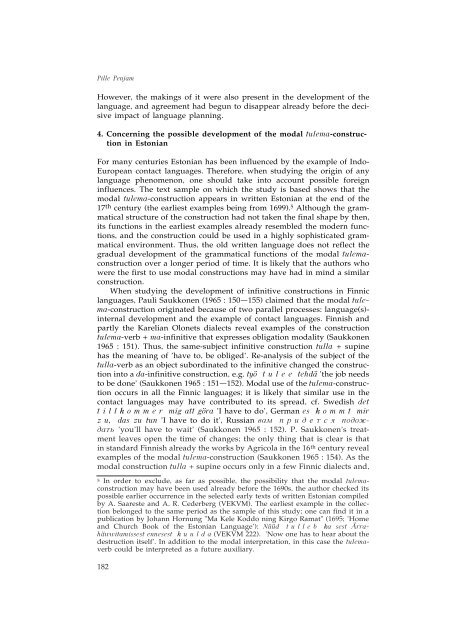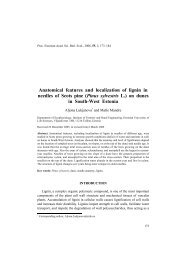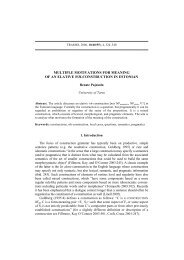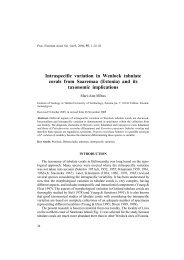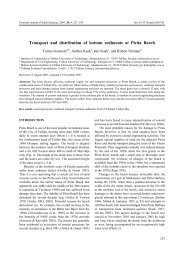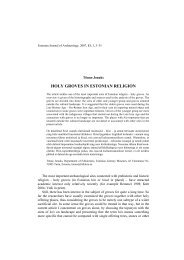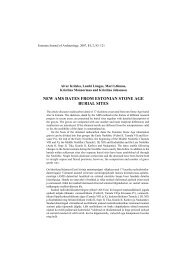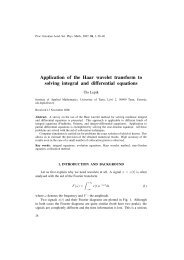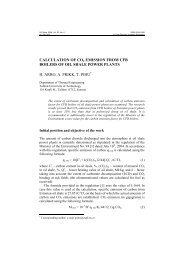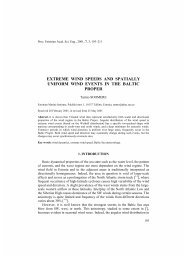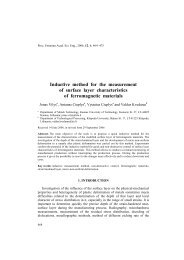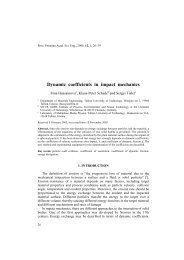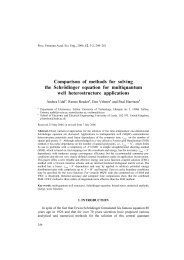PILLE PENJAM (Tartu) DEVELOPMENT OF THE MODAL ... - CEEOL
PILLE PENJAM (Tartu) DEVELOPMENT OF THE MODAL ... - CEEOL
PILLE PENJAM (Tartu) DEVELOPMENT OF THE MODAL ... - CEEOL
Create successful ePaper yourself
Turn your PDF publications into a flip-book with our unique Google optimized e-Paper software.
Pille Penjam<br />
However, the makings of it were also present in the development of the<br />
language, and agreement had begun to disappear already before the decisive<br />
impact of language planning.<br />
4. Concerning the possible development of the modal tulema-construction<br />
in Estonian<br />
For many centuries Estonian has been influenced by the example of Indo-<br />
European contact languages. Therefore, when studying the origin of any<br />
language phenomenon, one should take into account possible foreign<br />
influences. The text sample on which the study is based shows that the<br />
modal tulema-construction appears in written Estonian at the end of the<br />
17 th century (the earliest examples being from 1699). 5 Although the grammatical<br />
structure of the construction had not taken the final shape by then,<br />
its functions in the earliest examples already resembled the modern functions,<br />
and the construction could be used in a highly sophisticated grammatical<br />
environment. Thus, the old written language does not reflect the<br />
gradual development of the grammatical functions of the modal tulemaconstruction<br />
over a longer period of time. It is likely that the authors who<br />
were the first to use modal constructions may have had in mind a similar<br />
construction.<br />
When studying the development of infinitive constructions in Finnic<br />
languages, Pauli Saukkonen (1965 : 150—155) claimed that the modal tulema-construction<br />
originated because of two parallel processes: language(s)internal<br />
development and the example of contact languages. Finnish and<br />
partly the Karelian Olonets dialects reveal examples of the construction<br />
tulema-verb + ma-infinitive that expresses obligation modality (Saukkonen<br />
1965 : 151). Thus, the same-subject infinitive construction tulla + supine<br />
has the meaning of ’have to, be obliged’. Re-analysis of the subject of the<br />
tulla-verb as an object subordinated to the infinitive changed the construction<br />
into a da-infinitive construction, e.g. työ t u l e e tehdä ’the job needs<br />
to be done’ (Saukkonen 1965 : 151—152). Modal use of the tulema-construction<br />
occurs in all the Finnic languages; it is likely that similar use in the<br />
contact languages may have contributed to its spread, cf. Swedish det<br />
tillkommer mig att göra ’I have to do’, German es kommt mir<br />
zu, das zu tun ’I have to do it’, Russian vam pridetsq podowdatx<br />
’you’ll have to wait’ (Saukkonen 1965 : 152). P. Saukkonen’s treatment<br />
leaves open the time of changes; the only thing that is clear is that<br />
in standard Finnish already the works by Agricola in the 16 th century reveal<br />
examples of the modal tulema-construction (Saukkonen 1965 : 154). As the<br />
modal construction tulla + supine occurs only in a few Finnic dialects and,<br />
5 In order to exclude, as far as possible, the possibility that the modal tulemaconstruction<br />
may have been used already before the 1690s, the author checked its<br />
possible earlier occurrence in the selected early texts of written Estonian compiled<br />
by A. Saareste and A. R. Cederberg (VEKVM). The earliest example in the collection<br />
belonged to the same period as the sample of this study; one can find it in a<br />
publication by Johann Hornung ”Ma Kele Koddo ning Kirgo Ramat” (1695; ’Home<br />
and Church Book of the Estonian Language’): Nüüd tulleb ka sest Ärrahäwwitamissest<br />
ennesest kuulda(VEKVM 222). ’Now one has to hear about the<br />
destruction itself’. In addition to the modal interpretation, in this case the tulemaverb<br />
could be interpreted as a future auxiliary.<br />
182


